Last month Kerry Fores’ provocatively titled column, “No One Is Watching” (Building Time, March 2023), resulted in comments from readers who latched onto one small part of his commentary. “For better or worse, kit manufacturers are under no FAA oversight,” he said, opening the piece. “There are no independent engineering reviews. No mandatory wing loading or landing-gear drop tests. No fuel system evaluations. No minimum documentation standards.”
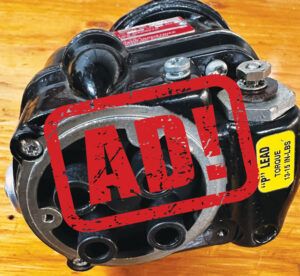
All of that is true, but our readers took exception to this statement later in the story: “Just as the FAA exercises no oversight of kit aircraft manufacturers, it has no authority to issue or enforce E/A-B safety directives. Further, an AD issued for a certified engine or part does not need to be complied with if it is bolted on an E/A-B.”
Kerry’s characterization of AD applicability has precedent. For most of homebuilt history, FAA-issued airworthiness directives did not explicitly apply. Typically, they applied to specific combinations of certified airplanes and their components, leaving applicability and compliance for builders to determine. Note here we’re talking about ADs, not service bulletins (titled “mandatory” or not), which aren’t even compulsory in the certified world.
For homebuilts, change came in 2012 when Advisory Circular 39-7D was published. In it, the FAA says: “Non-TC’d [type certificated] aircraft (e.g., amateur-built aircraft, experimental exhibition) are aircraft for which the FAA has not issued a TC under Part 21. The AD applicability statement will identify if the AD applies to non-TC’d aircraft or engines, propellers and appliances installed thereon. The following are examples of applicability statements for ADs related to non-TC’d aircraft.” It goes on to list two examples, including this one: “‘This AD applies to Lycoming Engine Models AEIO-360-A1A and IO-360-A1A. This AD applies to any aircraft with the listed engine models installed.’ This statement makes the AD applicable to the listed engine models installed on TC’d and non-TC’d aircraft.”
As a result, changes to the way the Applicability section is worded can, therefore, make an AD apply to a homebuilt by either specific or broad reference. And here we’re talking about components that may have a certified core. The FAA does not issue ADs on Experimental/Amateur-Built aircraft because there is no certification basis in the first place.
But the simple idea laid out in the AC doesn’t always have a simple solution. Let’s say that the IO-360-A1A mentioned above has an AD for a batch of bad connecting rods. If the airplane you built uses a bone-stock IO-360-A1A, then you’d need to look further to see if your engine is in the serial-number range specified by the AD. If it is, the AD applies to your engine.
But what if your engine was merely based on an A1A core? How do you know if you have the suspect connecting rods? At that point, it’s between you and your engine shop to trace the time frame in which it was built, identify the actual components used and then determine if they’re part of a bad batch. All good engine shops will have this kind of documentation for your engine—as will the factory that built your new engine, if that’s the case. But I can tell you that the engine previously in my airplane lacked the documentation to conclusively indicate if it still contained all AD-subject parts found in the original O-320 configuration from a Piper. (There was a notation on the older oil-pump AD, but that was about it.) These considerations ricochet around the aircraft systems.
Some Examples
But even the FAA’s newer stance on ADs for Experimentals has holes in it. One example I found is an older AD on certain Hartzell propellers. In the Applicability section it lists a number of engine variants and their common airframe mates. It also says, “These propellers and engines could be installed on, but not limited to” a range of models. Included in that list is a smattering of Experimental/Amateur-Built types—including the Lancair 360 and Van’s RV-6, RV-7 and RV-8—but it’s sure an incomplete list. Which explains the “not limited to” phrase that precedes the list.
Another example is the now-infamous crankshaft AD on Superior 360s. In fact, the Superior-made cranks could be in new Superior engines or used as a replacement in rebuilt 360s. In the Applicability section, the AD states that it applies to a range of engines with one of two crankshafts installed. It does not explicitly say that the AD applies to any aircraft with these installed; that part is implied by the AD on the engine itself.
In both of these cases, I can see owners shrugging their shoulders and claiming that these ADs don’t apply to them because their installation isn’t specifically listed. That’s nonsense.
Be Smart
Let’s look at this from a safety perspective. Ask yourself: Is there a part in my airplane that could fail in a known way? An AD exists because a pattern of failure has been identified that represents a flight risk, even a small one. Remember, too, that it’s likely for failures to show up first in certified aircraft because the fleet is so much bigger; we may have some common components that just haven’t appeared as failure prone because we don’t fly enough.
I spoke with Vic Syracuse on this subject. He said, “With freedom comes responsibility to our passengers and to the public.” He’s right. Experimentals have truly become mainstream. Passengers and even family members who don’t fully appreciate that our airplanes are hand built and begin life without a certification basis—despite the briefing we’re obliged to give them—assume there’s the same safety net as exists for a Cessna or Cirrus. We have the freedom to make choices in our builds, to customize and personalize to a great degree, but we owe our family and passengers more than just lip service to safety.
If you’re the original builder and, therefore, the holder of the repairman certificate for your airplane, it’s incumbent on you to think like an IA. If you’re the owner of a homebuilt inspected and signed off by an A&P, listen to what he or she has to say on any given AD. Take them seriously, as well as giving consideration to published service bulletins. You may have to do some digging, but it’s worth the effort.
I don’t want one generalization to overwhelm Kerry’s point. It’s really this: Because, essentially, no one is watching, you are the one responsible for safety. It’s a journey that begins at your airplane choice—continuing through component selection and the build itself—and continues with pilot proficiency and an unflinching eye on maintenance.





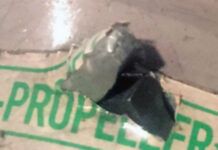
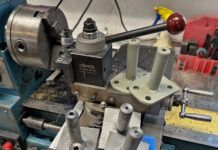
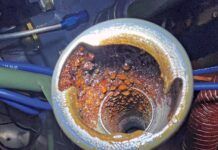

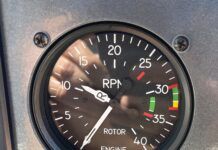
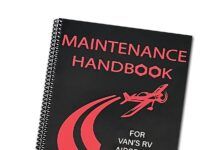
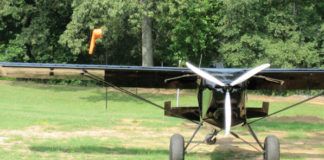
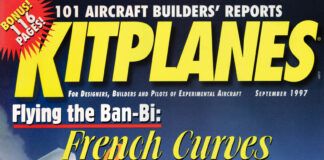
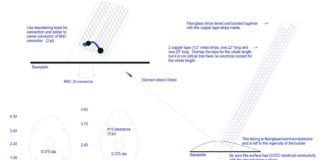
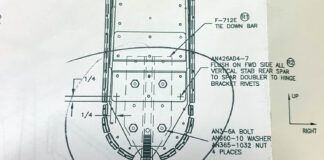
Excellent article, Marc. Your clarification of this vexing issue is much appreciated. Most of us in the experimental world have felt the HUGE responsibility to family, friends, and passengers from the get-go.
That’s a well written article Marc! You make (and get across the point effectively) that we, as operators and probably the owner of the aircraft, are responsible for the safe use of the airplanes we fly. Beginning at unlocking the hangar door, through the weather assessment and preflight inspection all the way to tying it down at the other end of the flight, we have the duty to ourselves and those around us to conduct our actions with safety as a primary matter. Confirming our equipment is up to the task at hand is part of that duty. To shirk that responsibility (in the short or long term, perhaps eventually) will lead to a loss of our freedom.
Hi all:
Whether you’re a True Believer or a Godless Heretic – when it comes to whether ADs apply to to homebuilts – the machines we fly don’t care what kind of Airworthiness Certificate the airplane has.
Of course, there are stupid, needlessly complicated (& expensive!), and completely out-of-date ADs – we’ve all seen them. And keeping track of the part/serial numbers and the ADs themselves is a PITA.
But, for me, ADs are just one more source of information to help keep me safe.
YMMV
Regards,
James
So, this brings us to the question about whether the FAA can make a legally-binding policy change by Advisory Circular, which is, by definition, advisory, not regulatory. As I understand it, outside of FAA claiming “reckless operation”, nothing in AC’s is legally binding.
How can a statement in an Advisory Circular change long-standing FAA policy and extend their authority to something where the never had it before?
I’m NOT making the argument that one should not be prudent and use AD’s as a worthwhile tool to ensure the highest possible level of safety for our airplanes and their occupants.
I’m simply asking whether an agency can make a new rule that makes something legally binding without going through the process of making a new FAR to accomplish that.
The authority to issue AD’s stems from their ability to issue and encumber Type Certificates, which do not exist for experimental amateur-built airplanes. How can anyone require an AD to be complied with for an airplane to be airworthy, when airworthiness is defined as being in compliance with the airplane’s type certificate?
I think though Marc makes a very reasoned argument, as always, it is still far from a settled point.
EAA still feels differently, last I heard from them about it, which wasn’t long ago. They still say no, and they’ve been up and down the FAA ladder with the question on many occasions.
Again, I’m not talking about prudence. I’m talking about legality.
This can leave owner’s of older homebuilts in a dilemma. There was a time when the FAA had builders remove the data tags from engines so they wouldn’t be used in certificated aircraft in the future. It makes researching AD s pretty tough. Last week I called a certified engine repair station and asked about records on an O 200 as the logbooks were lost. It was a pickled engine that had been on a stand several years after overhaul, never installed. The engine preservation was redone yearly. The shop told me the FAA only requires records be kept two years and would no longer have them for this engine. Reconstructing logbooks may be impossible without an expensive tear down. The engine borescopes like new. But you can’t read the part numbers. I be interested in helpful comments…
My Liability Insurance policy for the RV-4 has 48 pages of fine print. About 40 of those pages are coverage exclusions. I better read carefully to determine if insurance companies are calling for AD compliance on experimentals.
I think it boils down to how much you value you and any passenger’s backsides.
I have a Superior in my RV9. The AD gives specific part numbers and serial numbers. Debate over. I have to be willing to keep my plane up to the same standards as one I’m inspecting. $10k later I’m in compliance.
Yeah, it’s a pita but it’s the law (and maybe a little common sense, too)
Danny